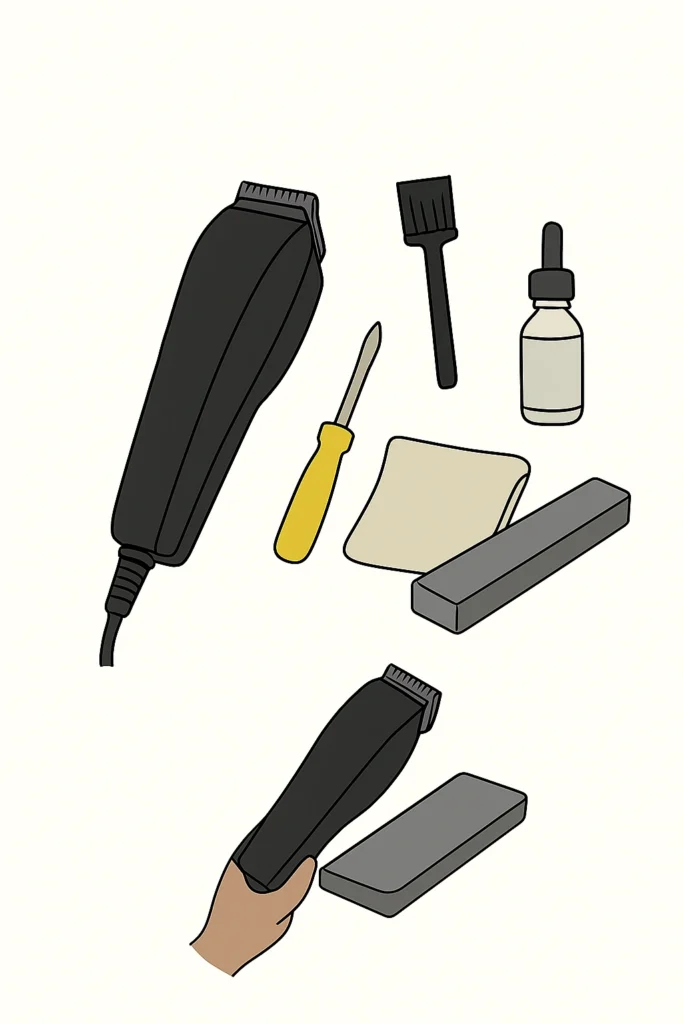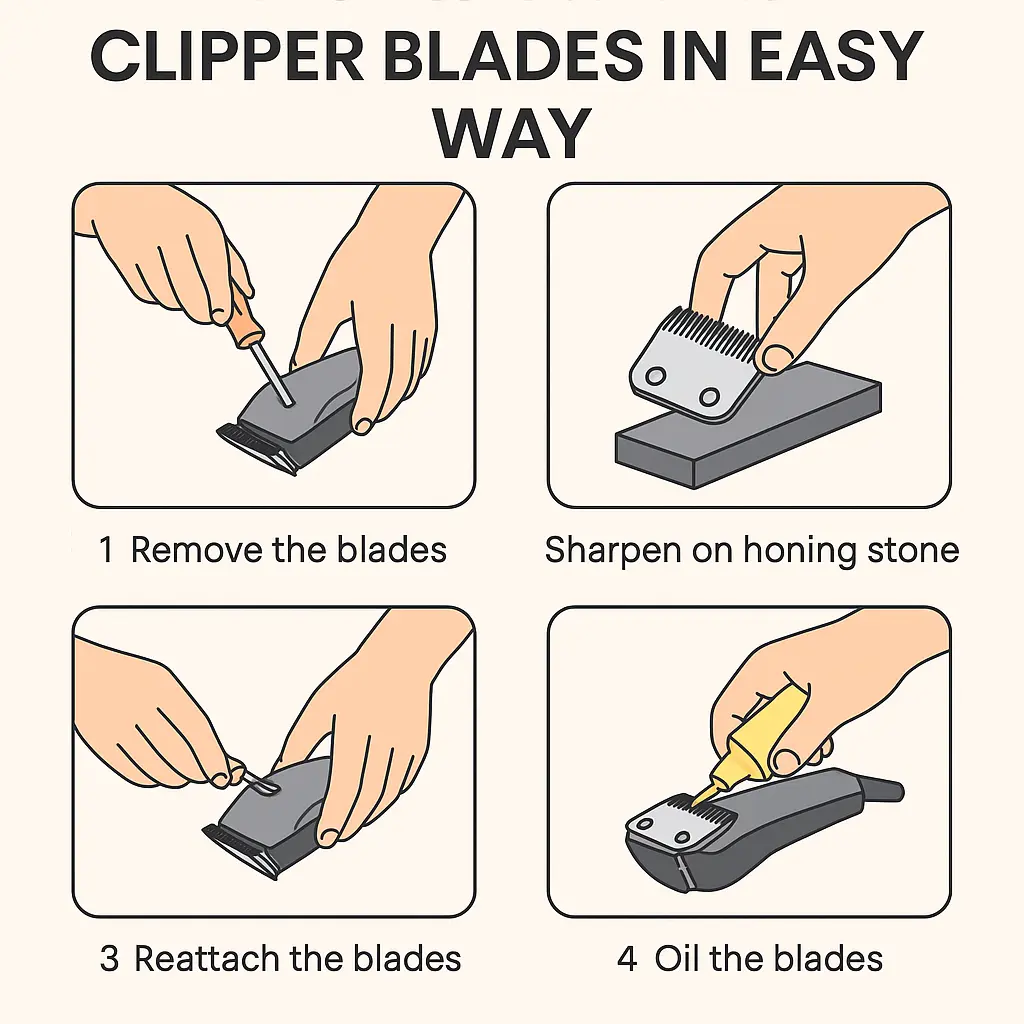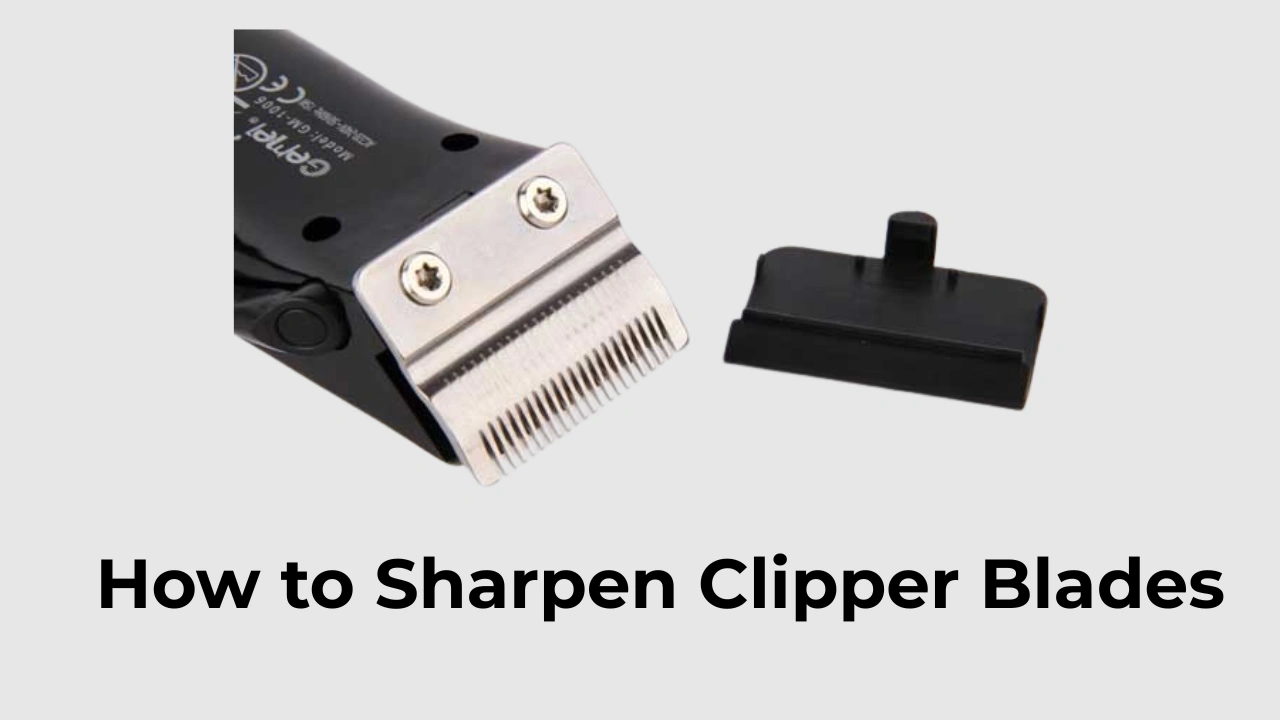When your hair clippers are yanking or cutting unevenly, then chances are your blades are in need of attention. How to sharpen clipper blades at home using simple tools. This is an easy, safe and cheap way of restoring your clippers, and you do not have to spend money on professional services.
It is user-friendly and yet it produces professional results. There are also useful maintenance suggestions that will help you make your blades last longer. With this guide, you will save money, have more comfortable grooming time, and have a longer life of your equipment.
Why Sharp Clipper Blades Matter
Cutting is easy with sharp blades. They slide through hair without catching, so there is no pulling and no irritation to the skin. Blunt blades do not only make your work slow but also break hair by bending or splitting rather than cutting.
In the long run, blunt blades exert more pressure on the clipper motor. This may cause overheating or permanent damage. This will make them sharper and hence easier to cut, perform and wear on your machine.
Tools and Preparation
You will also require the proper equipment: a screwdriver, a small cleaning brush, clipper oil, a soft cloth, and a sharpening medium such as a honing stone, diamond stone, or fine-grit sandpaper. Prepare all the things before you start so that you do not get interrupted.
Preparation also entails cleaning your clippers. Clean the hair and dirt off so nothing gets in the way of sharpening. Do it in a bright place and preferably put on protective gloves to ensure your hands are not cut by sharp edges.

Step-by-Step Sharpening
To start with, unscrew the blades and detach them with the clipper body. Rest the blade on the sharpening surface and draw it in a smooth figure-eight or straight movement. Use light pressure, and even pressure to avoid taking off too much metal.
Do the motion again approximately 8-10 times, and turn the blade over to sharpen the other side. Look at the edge frequently. Stop when it is smooth and sharp to the touch. Clean up metal dust and then reassemble.
Advanced Alternative Methods
Diamond sharpening stone is an excellent choice in case you desire a more lasting, accurate outcome. It is quicker and longer lasting than a common stone. A less expensive option is sandpaper, which can be used to do light touch-ups.
Others apply aluminum foil by passing the clippers through folded papers to straighten micro-edges. Clipper blade sharpening machines also exist, although they tend to be more appropriate to professional barbers.
Blade Maintenance After Sharpening
After sharpening your blades, they require good treatment. Clean them and scrape off all the remaining debris. Put a drop or two of clipper oil on the moving parts to keep them rust free and running freely.
Put the clippers back together, checking that the blades are properly aligned. Use the clippers to distribute the oil by running it a few seconds. Frequent oiling maintains the friction at a minimum and prolongs the sharpness.
Common Mistakes to Avoid
Over sharpening the blade will destroy the edge. All you need is gentle and persistent pressure. Blades can become thin and brittle with over-sharpening, so be sure to check your progress frequently.
The other error is putting back together the clipper without alignment. Blades that are not aligned may cut in an uneven manner or even scratch the skin. Take a picture prior to disassembly to be able to replicate the setup.
Sharpen Clipper Blades in Easy Way

Troubleshooting Sharpening Problems
In case your clippers continue to pull hair even after sharpening, then it may not be sharpness but alignment. Ensure that the upper and lower blades are even. The performance can be influenced by even a small gap.
Pitting or rust on the blades is also a problem. When this happens, change the blades instead of attempting to sharpen them. Other times the performance improvement is worth the new blades.
Quick Tips
- Always clean and dry blades before sharpening.
- Use light pressure and check sharpness regularly.
- Oil your blades after every sharpening session.
- Store clippers in a dry place to prevent rust.

